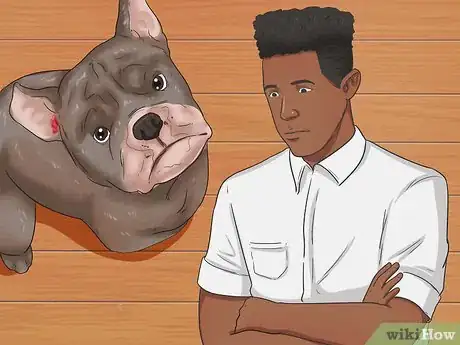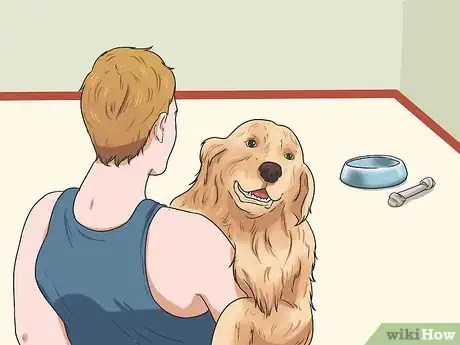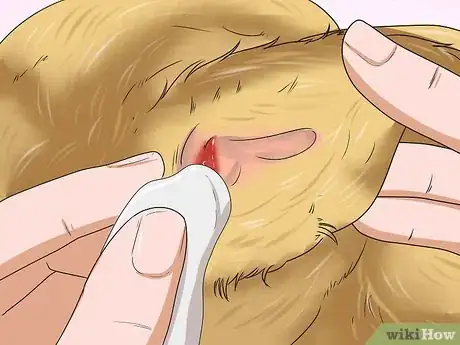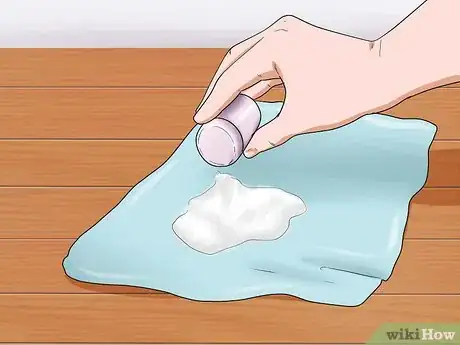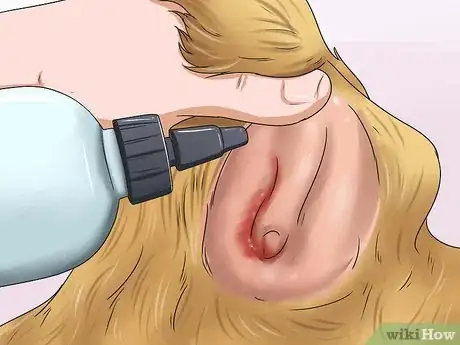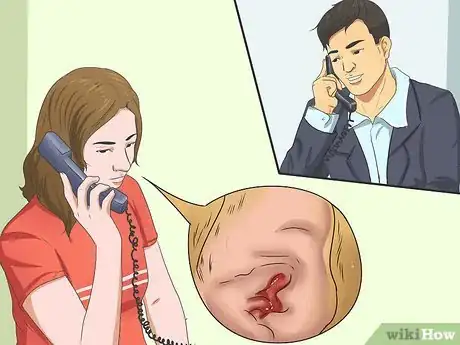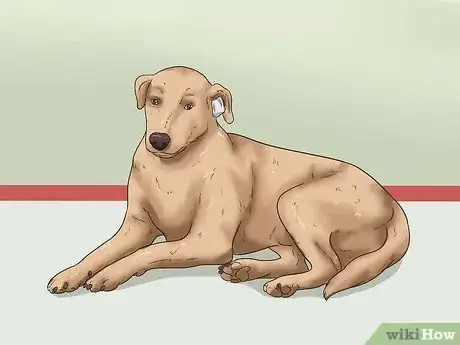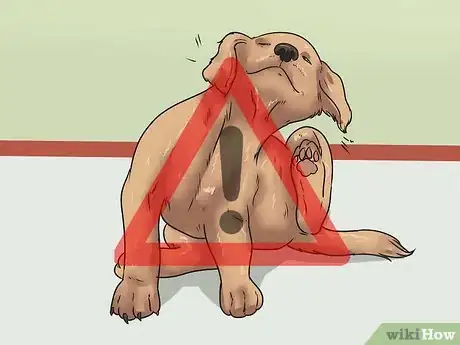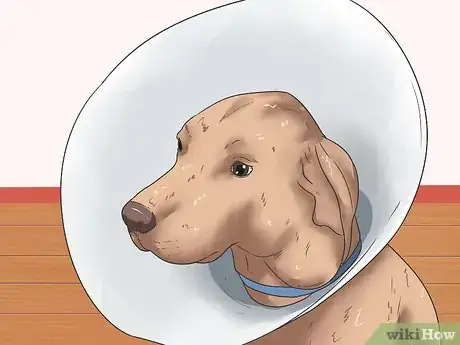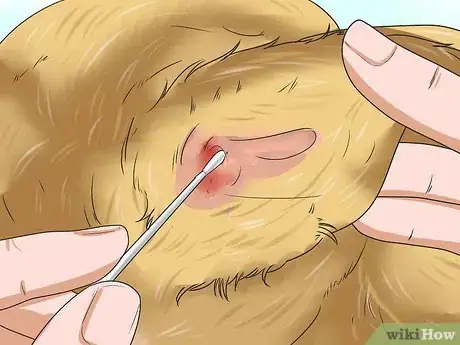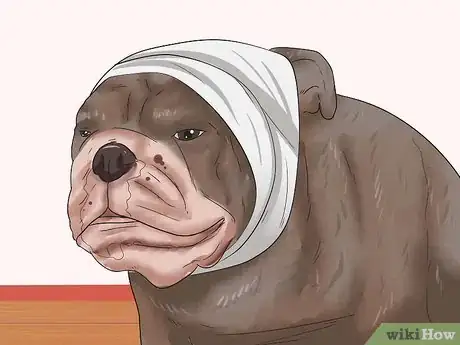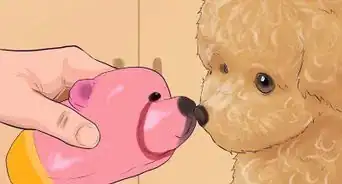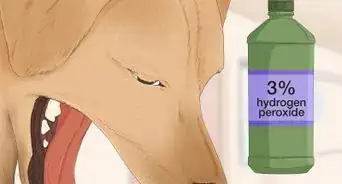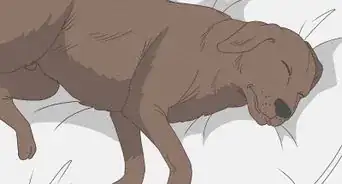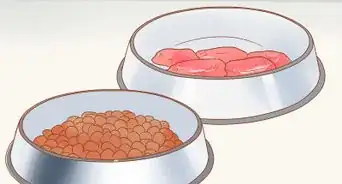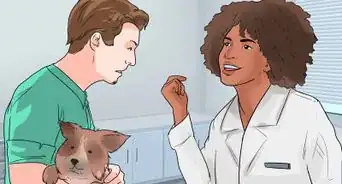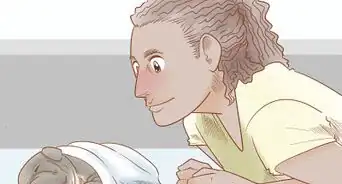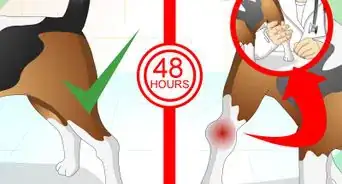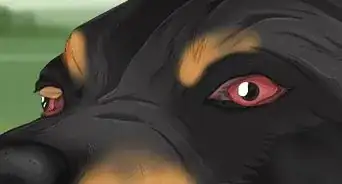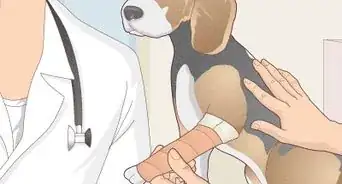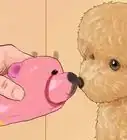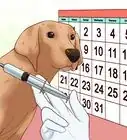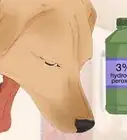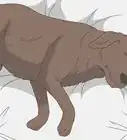This article was co-authored by Ray Spragley, DVM. Dr. Ray Spragley is a Doctor of Veterinary Medicine and the Owner/Founder of Zen Dog Veterinary Care PLLC in New York. With experience in multiple institutions and private practices, Dr. Spragley’s specializations and interests include non-surgical management of cranial cruciate ligament tears, Intervertebral Disk Disease(IVDD), and pain management in osteoarthritis. Dr. Spragley holds a BS in Biology from SUNY Albany and has a Doctor of Veterinary Medicine degree (DVM) from Ross University School of Veterinary Medicine. He is also a Certified Canine Rehabilitation Therapist (CCRT) through the Canine Rehab Institute as well as a Certified Veterinary Acupuncturist (CVA) through Chi University.
wikiHow marks an article as reader-approved once it receives enough positive feedback. In this case, 100% of readers who voted found the article helpful, earning it our reader-approved status.
This article has been viewed 354,911 times.
If you've ever had a dog cut the tip of its ear, you know how difficult it can be to stop the ear from bleeding. Even with pressure and towels to slow down the bleeding, once you remove the towel from his ear and he feels the tingling sense, he will shake his head and start the flow all over again. With a little bit of research, you can stop the blood flow and keep the dog from re-opening the wound using a clotting aid or even flour or baby powder.
Steps
Stopping the Dog’s Ear from Bleeding
-
1Remain calm. Ears bleed a lot due to the abundance of blood vessels in the ear. In many cases, there is a lot of blood. Don’t worry. Chances are good the dog will not bleed too severely. Also, dogs feed off the emotional energy of their humans. If you are upset or panicked, your dog will get excited. Excitement raises the blood pressure, which leads to more bleeding.
-
2Move the dog to a quiet location. You want to remove the dog from other sources or excitement such as other dogs or noisy people. Provide a couple of treats and get the dog to sit or lay down, so you can tend to the injury.Advertisement
-
3Apply pressure to the injury. Use a dry, clean paper towel, washcloth, pieces of sterile gauze, or any other clean cloth to apply direct pressure to the cut. Keep firm pressure on the cut for up to five minutes.[3]
- At two minutes, you can gently lift the towel or cloth to see if the bleeding has slowed.
- After five minutes of pressure, most bleeding should have slowed considerably or stopped.
-
4Apply a clotting aid or flour, baby powder, or cornstarch. If you have a commercial clotting aid—the kind you can purchase in the store—pour an ample amount of powder into the palm of one of your hands. Using a clean fingertip, apply the clotting aid to the wound using gentle pressure.[4] Repeat until the bleeding stops completely.
- If you don’t have a clotting aid, cornstarch, flour, or baby powder will work.
- Do not use baking soda or baking powder as they can lead to an infection in the cut.
-
5Clean up the area. You can use diluted hydrogen peroxide to remove any dried blood from your dog. However, do not use this or anything else directly on the wound. That might disturb the clot and cause bleeding again.
-
6Call the veterinarian. Though you can handle most small ear cuts at home, there are some situations where you should allow your vet to treat the dog. In these situations, continue to apply pressure to the wound as you transport your dog to the clinic. The ear may need sutures or other measures to stop the blood flow and ensure the ear heals properly. Seek a vet’s assistance if:[5]
- There is profuse bleeding
- The wound goes through the ear
- The bleeding doesn’t stop after 10 minutes of home treatment
- The bleeding keeps restarting
- The wound is larger than a simple cut
Keeping the Dog from Re-Opening the Wound
-
1Observe the dog in a quiet environment. Keep the dog in the quiet spot, so he can rest and you can keep a close eye on him. Make sure that the dog does not participate in any activity such as running or playing.
-
2Try to keep the dog from shaking or scratching at the ear.[6] If the dog shakes its head or scratches due to sensations from the wound, he can re-open the wound and cause further bleeding.
- Another potential complication from vigorous head shaking or scratching is the formation of an aural hematoma, which is a blood clot between the layers of the ear. This happens when a blood vessel beneath the skin and cartilage breaks and bleeds into the ear cartilage. The ear will swell like a pillow. These need to be treated by a veterinarian.[7]
-
3Use an Elizabethian collar for two or three days. To minimize complications, you can use an Elizabethian collar (also known as an e-collar, cone or recovery collar) for two or three days.[8] This will prevent the dog from reaching the ear with a foot.
-
4Clean the ear. You can minimize the dog’s desire to shake its head by carefully cleaning the ear and ear canal. Remove any bothersome blood or debris in the canal or inside the ear.
-
5Create a head bandage. Another option is to create a head bandage for the dog. This is especially helpful if the dog keeps flapping its ears. You will need to sacrifice a stocking for this option. Cut the toe off the stocking to form a tube. Fold the ears back over the head, using a piece of gauze on the wound. Carefully slide the stocking over the head. The nose and eyes should remain open with the stocking placed just beyond the eyes.
- Make sure the fit is snug but not too tight. You should easily be able to fit a finger under the stocking both on the head and the neck.
- Leave the bandage on for a day, then remove it and check the ear wound. If needed, you can replace it for another day as long as it remains clean and dry.
Expert Q&A
-
QuestionHow do you fix a dog's split ear?
 Ray Spragley, DVMDr. Ray Spragley is a Doctor of Veterinary Medicine and the Owner/Founder of Zen Dog Veterinary Care PLLC in New York. With experience in multiple institutions and private practices, Dr. Spragley’s specializations and interests include non-surgical management of cranial cruciate ligament tears, Intervertebral Disk Disease(IVDD), and pain management in osteoarthritis. Dr. Spragley holds a BS in Biology from SUNY Albany and has a Doctor of Veterinary Medicine degree (DVM) from Ross University School of Veterinary Medicine. He is also a Certified Canine Rehabilitation Therapist (CCRT) through the Canine Rehab Institute as well as a Certified Veterinary Acupuncturist (CVA) through Chi University.
Ray Spragley, DVMDr. Ray Spragley is a Doctor of Veterinary Medicine and the Owner/Founder of Zen Dog Veterinary Care PLLC in New York. With experience in multiple institutions and private practices, Dr. Spragley’s specializations and interests include non-surgical management of cranial cruciate ligament tears, Intervertebral Disk Disease(IVDD), and pain management in osteoarthritis. Dr. Spragley holds a BS in Biology from SUNY Albany and has a Doctor of Veterinary Medicine degree (DVM) from Ross University School of Veterinary Medicine. He is also a Certified Canine Rehabilitation Therapist (CCRT) through the Canine Rehab Institute as well as a Certified Veterinary Acupuncturist (CVA) through Chi University.
Veterinarian A veterinarian may be able to suture the torn ear together (depending on how clean the area is). If infected, that portion of ear may need to be removed.
A veterinarian may be able to suture the torn ear together (depending on how clean the area is). If infected, that portion of ear may need to be removed. -
QuestionMy dog's ear has been bleeding for 20 minutes and won't stop. What do I do?
 Pippa Elliott, MRCVSDr. Elliott, BVMS, MRCVS is a veterinarian with over 30 years of experience in veterinary surgery and companion animal practice. She graduated from the University of Glasgow in 1987 with a degree in veterinary medicine and surgery. She has worked at the same animal clinic in her hometown for over 20 years.
Pippa Elliott, MRCVSDr. Elliott, BVMS, MRCVS is a veterinarian with over 30 years of experience in veterinary surgery and companion animal practice. She graduated from the University of Glasgow in 1987 with a degree in veterinary medicine and surgery. She has worked at the same animal clinic in her hometown for over 20 years.
Veterinarian Sometimes a small cut needs to be ligated and the wound stitched in order to stop the bleeding. If you have yet to try the methods in the guide, then try applying pressure across the cut for five – 10 minutes and then apply a dressing round the dog's head to stop him shaking. If you've tried this and it's still bleeding, contact a vet. If possible, ask a friend to drive whilst you keep pressure on the ear.
Sometimes a small cut needs to be ligated and the wound stitched in order to stop the bleeding. If you have yet to try the methods in the guide, then try applying pressure across the cut for five – 10 minutes and then apply a dressing round the dog's head to stop him shaking. If you've tried this and it's still bleeding, contact a vet. If possible, ask a friend to drive whilst you keep pressure on the ear.
References
- ↑ Kirk and Bistner’s Handbook of Veterinary Procedures and Emergency Treatment. Eighth Edition. Ford and Mazzaferro. Saunders. 2006
- ↑ Kirk and Bistner’s Handbook of Veterinary Procedures and Emergency Treatment. Eighth Edition. Ford and Mazzaferro. Saunders. 2006
- ↑ The First Aid Companion for Dogs & Cats. Amy D. Shoja. Rodale, Inc. 2001
- ↑ The Merck Veterinary Manual, 10th Edition. Kahn and Line, editors. Wiley. 2010
- ↑ The Merck Veterinary Manual, 10th Edition. Kahn and Line, editors. Wiley. 2010
- ↑ The Merck Veterinary Manual, 10th Edition. Kahn and Line, editors. Wiley. 2010
About This Article
To stop a dog's ear from bleeding, try to remain calm so your dog doesn't panic, which could raise its blood pressure and make the bleeding worse. First, apply pressure to the injury using a dry, clean paper towel, washcloth, or piece of gauze for up to 5 minutes. Then, using a clean fingertip, apply a commercial clotting aid or some cornstarch, flour, or baby powder to the wound with gentle pressure to help stop the bleeding. If the bleeding doesn't stop after 10 minutes, or if the wound keeps reopening, take your dog to the vet as soon as possible. To learn how to keep your dog's wound from reopening, scroll down!
